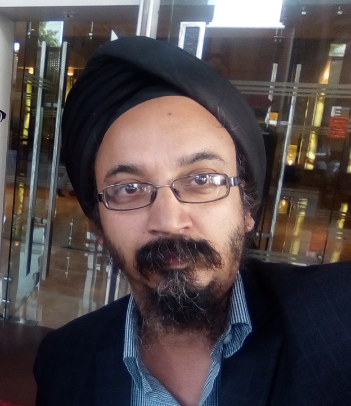Scientific Program

Kuldeep Singh
IFUMB, India
Title: Anomaly Scan: Paradigm shift from the Second to the first trimester
Biography:
Dr. Kuldeep Singh is practicing in South Delhi and is known for his skills in Ultrasound in Ob, Gyn and Infertility. He has authored 16 books on Ultrasound in Obs, Gyn and Infertility. His books have been translated into Spanish, Chinese and Portugese. He was awarded the IMAGING SCIENCE AWARD in the AICOG in Delhi. He is presently the President of the Delhi Chapter of IFUMB. With teaching as his passion he is presently running Ultrasound Teaching Modules in Basic and Advanced Ultrasound in Obstetrics, Gynecology and Infertility.
Abstract
Ultrasound is an essential tool for any obstetric practise. When it started five decades ago little did we realise that this invention is a technological marvel. One could look into the presentation and the viability of the fetus. Acrania could be excluded in the third trimester and with ultrasound machines and probes getting better we could exclude that in the second trimester so called Level II scan. With high resolution probes and high frequency transvaginal probes one can now diagnose fetal abnormalities in the late first trimester. This avoids the mental trauma the mother and the family have to go through and lethal abnormalities can be terminated much earlier. Acrania, anencephaly, gross dysraphic disorganisation of the fetal spine, anterior thoracic and abdominal wall defects and gross limb abnormalities are few structural malformations that can be detected with ease as early as 11-12 weeks. Apart from structural abnormalities the index of suspicion for chromosomal abnormalities also is there with looking at the nuchal translucency, nasal bone and flow through the tricuspid valve and in the ductus venosus. Combined testing with a dual test increases the sensitivity manifold. What is most important is the knowhow of what to look and how to look in your 11-14 weeks scan.
Reference:
- Braithwaite JM, Armstrong MA, Economides DL. Assessment of fetal anatomy at 12 to 13 weeks of gestation by transabdominal and transvaginal sonography. Br J Obstet Gynaecol 1996; 103:82-85. CrossRef, Medline
- Ghi T, Huggon IC, Zosmer N, Nicolaides KH. Incidence of major structural cardiac defects associated with increased nuchal translucency but normal karyotype. Ultrasound Obstet Gynecol 2001; 18:610-614. CrossRef, Medline
- D’Ottavio G, Mandruzzato G, Meir YJ, et al. Comparisons of first and second trimester screening for fetal anomalies. Ann N Y Acad Sci 1998; 847:200-209. CrossRef, Medline
- Brady AF, Pandya PP, Yuksel B, Greenough A, Patton MA, Nicolaides KH. Outcome of chromosomally normal livebirths with increased fetal nuchal translucency at 10–14 weeks’ gestation. J Med Genet 1998; 35:222-224. CrossRef, Medline
- Souka AP, Nicolaides KH. Diagnosis of fetal abnormalities at the 10–14-week scan. Ultrasound Obstet Gynecol 1997; 10:429-442. CrossRef, Medline
- Nursing Education and Research
- Evidence-Based-Clinical Practice
- Evidence Based- Non Clinical Practice
- Reproductive Health Nursing
- Cancer Nursing
- Mental Health Nursing
- Surgical Nursing
- Cardiac Nursing
- Orthopedic Nursing
- Men Nursing
- Holistic Nursing
- Midwifery and Pediatric Nursing
- Environmental Health and Veterinary Nursing
- Clinical and Community Nursing
- Critical Care and Emergency Nursing
- Anaesthesia and Transitional Care Nursing
- New Technologies in Nursing Education
- Nursing Informatics & Nursing Management
- Forensic and Legal Nursing

